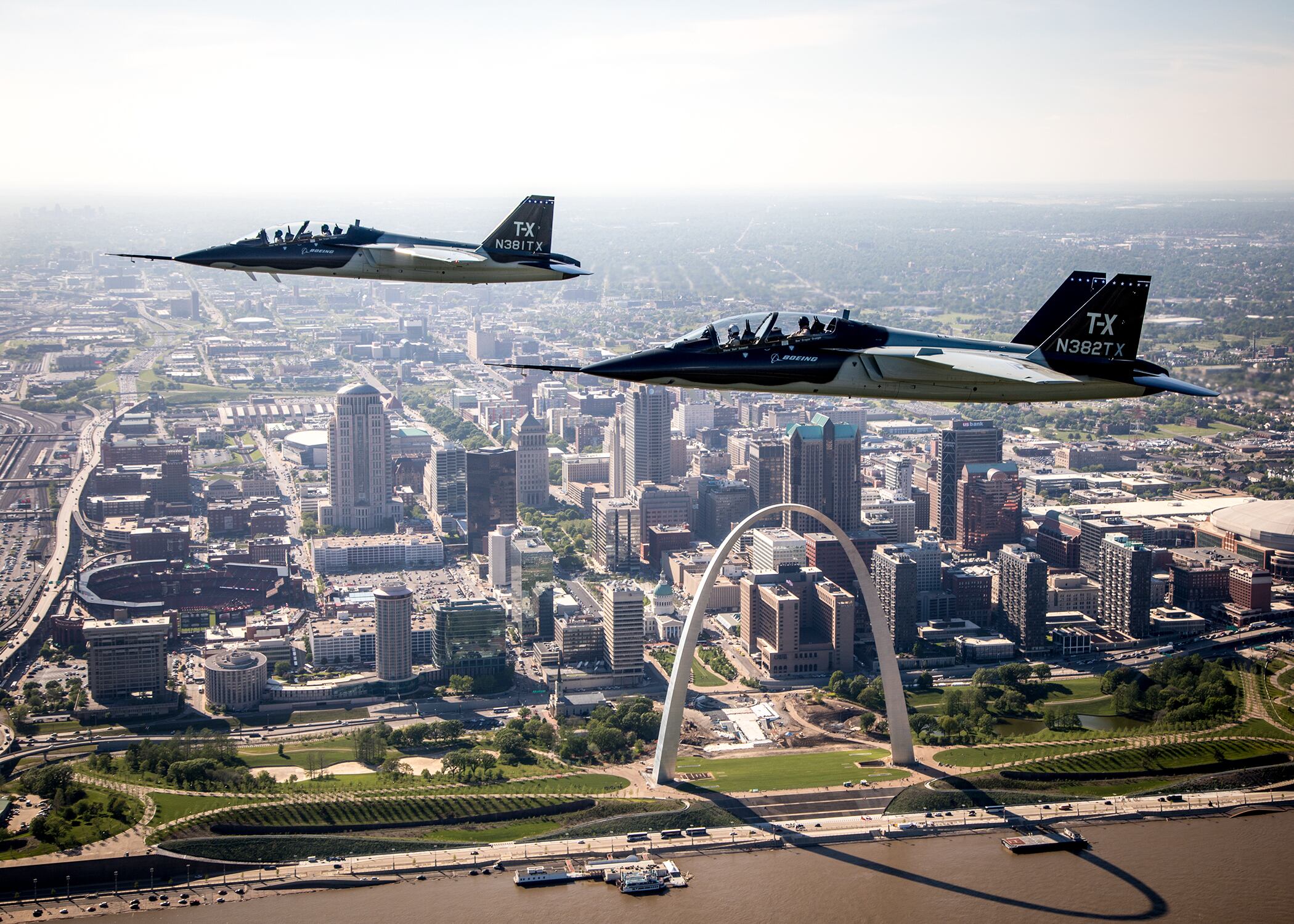WASHINGTON — L3 Technologies, Triumph Group Inc. and Collins Aerospace are among the companies that will work alongside Boeing to create the U.S. Air Force’s T-X trainer.
Boeing was previously tight-lipped about its industrial collaborators on T-X, disclosing only its partnership with Saab — which co-designed the plane and builds the aft fuselage — and General Electric, whose F404 engine powers the plane.
RELATED

L-3 Technologies will provide missions systems equipment — specifically navigation and surveillance systems — for the jet, confirmed a Boeing spokeswoman to Defense News.
Collins Aerospace, a division of United Technologies Corporation, will provide its ACES 5 ejection seat, prevailing against rival Martin-Baker’s Mk18 system. Collins will also make the jet’s landing gear, including its wheels, brakes, structure and actuation, the company stated in a news release.
“Our innovative technologies will play a critical role in helping to keep aircrews safe, reducing maintenance costs, and improving operational performance,” said John Fyfe, the company’s director for Air Force programs.
Meanwhile, Triumph will provide hydraulic systems and the “airframe mounted accessory drives” used in the Saab-produced aft fuselage. An airframe-mounted accessory drive provides power for the aircraft’s hydraulic pumps, auxiliary fuel pumps and electrical generators, according to the company, and Triumph also produced such systems for Saab’s Gripen E aircraft.
“We look forward to delivering these systems for the T-X program that will provide U.S. Air Force pilots in training with the latest equipment to support missions that protect freedom and democracy,” said Frank Dubey, the executive vice president of Triumph Integrated Systems.
Boeing won the T-X contract in September, beating out Lockheed Martin and Leonardo DRS for an award worth up to $9.2 billion.
For Boeing and the other companies involved with developing the T-X, there is potential to increase the number of aircraft produced through international sales and follow-on buys by the Air Force. However, keeping down costs will be key to profitability.
The T-X program of record calls for the purchase of 351 trainers, but the service could buy up to 475 aircraft if all options are executed on the current contract. Air Force acquisition officials said that structure gives the service more flexibility to procure jets at a rapid pace if needed.
The first four lots of T-X jets will be produced under a fixed-price, incentive-fee model, which would allow Boeing to rake in greater profit if it meets certain Air Force goals. From the fifth lot onward, planes will be delivered under a firm fixed-price structure whereby industry accepts the risk of cost overruns.
While the recent announcements shed some light on the industrial participation in the program, big questions remain.
RELATED

Boeing is set to manufacture its portion of the T-X at its St. Louis, Missouri, production facility, a move that the company says will support 1,800 direct and indirect jobs in Missouri.
Saab executives have also vowed to bring some of the production to the United States, boosting the amount of the plane made in the U.S. to 90 percent. During a September 2017 news conference, Saab AB president and CEO Haken Buskhe said that the company was considering building a new facility, working with an existing company and using its space, or buying an existing plant.
“I’m not standing here without having done some homework,” he said then. However, despite having multiple options on the table, Saab has not announced a decision on the location of its U.S.-based T-X plant.
Valerie Insinna is Defense News' air warfare reporter. She previously worked the Navy/congressional beats for Defense Daily, which followed almost three years as a staff writer for National Defense Magazine. Prior to that, she worked as an editorial assistant for the Tokyo Shimbun’s Washington bureau.








